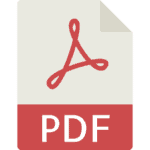Civil Litigation
Showing 556–570 of 980 resultsSorted by average rating
Filter by: FEDERAL DISTRICT
Filter by Price
Filter by: FILE TYPE
Plaintiff response to motion to dismiss
Response to motion to dismiss on Patent issue
Motion to Dismiss Claims in Complaint
DEFENDANT MOTION TO DISMISS PLAINTIFF’S NINTH AND THIRTEENTH CLAIMS FOR RELIEF PURSUANT TO C.R.C.P. 12(b)(1) dealoing with inventors and patent claims
Plaintiff’s Motion for Leave to Amend Pleadings Join Parties
PLAINTIFF’S MOTION FOR LEAVE TO AMEND PLEADINGS JOIN PARTIES
Product Liability Lawsuit – Federal Court Civil Complaint and Jury Demand
Federal Court Civil Complaint, including claims for Strict Liability, Product Liability-Failure to Warn, Negligence, Breach of Warranty- Express and Implied, Fraud, Fraudulent Concealment, and Negligent Representation.
Product liability is the area of law in which manufacturers, distributors, suppliers, retailers, and others who make products available to the public are held responsible for the injuries those products cause.
Product Defects: Responsible Parties
For product liability to arise, at some point the product must have been sold in the marketplace. Historically, a contractual relationship, known as “privity of contract,” had to exist between the person injured by a product and the supplier of the product in order for the injured person to recover. In most states today, however, that requirement no longer exists, and the injured person does not have to be the purchaser of the product in order to recover. Any person who foreseeably could have been injured by a defective product can recover for his or her injuries, as long as the product was sold to someone.
Liability for a product defect could rest with any party in the product’s chain of distribution, such as:
-The product manufacturer;
-A manufacturer of component parts;
-A party that assembles or installs the product;
-The wholesaler; and
-The retail store that sold the product to the consumer.
Answer to Title VII Complaint
Defendants answer to complaint for title VII
Defendant response to Objection to non party
Defendant’s Response to Motion for Determination of Defendants Designation of non party at faul
Defendant motion to vacate trial date
Motion to vacate trial date and extend discovery
Opposition to Defendants’ Motion for Protective Order
PLAINTIFF’S RESPONSE IN OPPOSITION TO DEFENDANTS’ MOTION FOR, regarding deposition and corporate names
Federal Court Civil Complaint with Request for Injunctive Relief
Federal Civil Complaint based on diversity of citizenship, and including claims for misappropriation of trade secrets and breach of contract; includes request for injunctive relief. US District Court for the District of Minnesota.
Defendant response to mtn for punitive
Defendants Response Motion for punitive damages
motion to add punitive damages
motion for leave to add punitive damages
Complaint for Age Discrimination
Age discrimination involves treating an applicant or employee less favorably because of his or her age.
Complaint in Federal court for age discrimination:
To establish an age discrimination claim, plaintiff must show that:
–she was older than 40;
–she was discharged;
–she was qualified for the job and met the defendant’s legitimate expectations; and.
–her position remained open or was filled by a similarly qualified individual who was substantially younger.
An average out of court settlement is about $40,000. In addition, 10 percent of wrongful termination and discrimination cases result in a $1 million dollar settlement. The majority of cases, about 67 percent, are ruled in the plaintiff’s favor when taken to litigation.
What are grounds for age discrimination?
The employee, at the time of the act alleged to be discriminatory, is 40 or older; The employee is qualified for their job position; The employee experiences an adverse employment action; Adverse actions include actions such as demotions, firings, or changes to the terms, conditions or privileges of employment); and.
Response To Defendnat motion to Stirke
Plaintiff Response to Defendant Motion to Strike Plaintiff’s Motion
Complaint for Fair Labor Standard Act – Ohio
1. the Fair Labor Standards Act (“FLSA”), 29 U.S.C. §201, et seq., the Ohio Minimum Fair Wage Standards Act, O.R.C. Chapter 4111 (“the Ohio Wage Act”), the Ohio Prompt Pay Act, O.R.C. § 4113.15 (“OPPA”), and 28 U.S.C. §1331.








